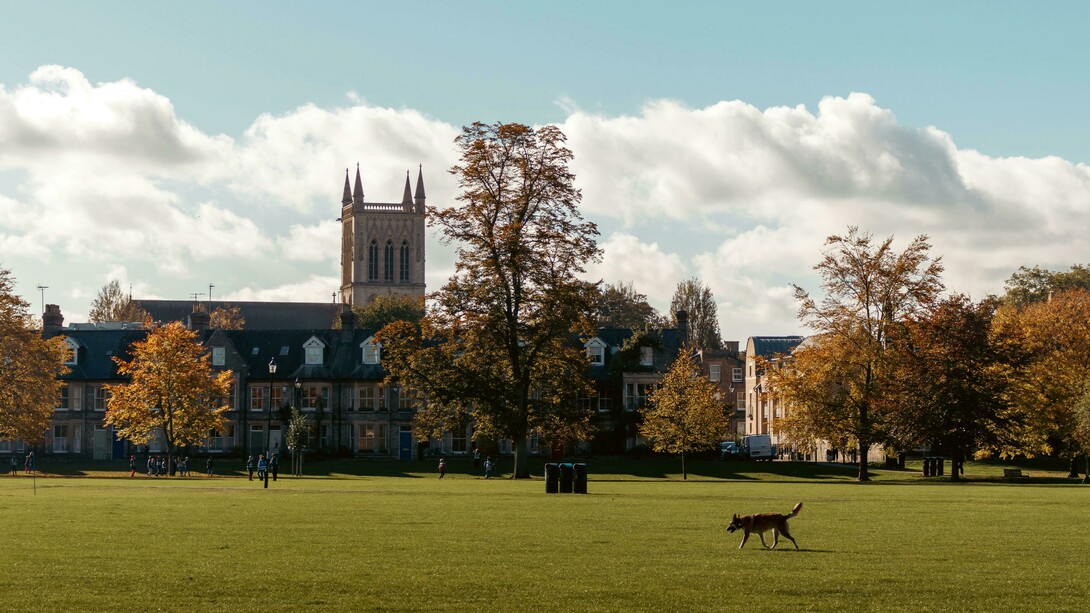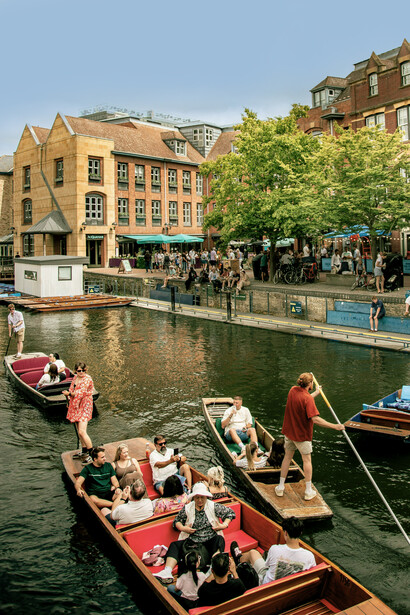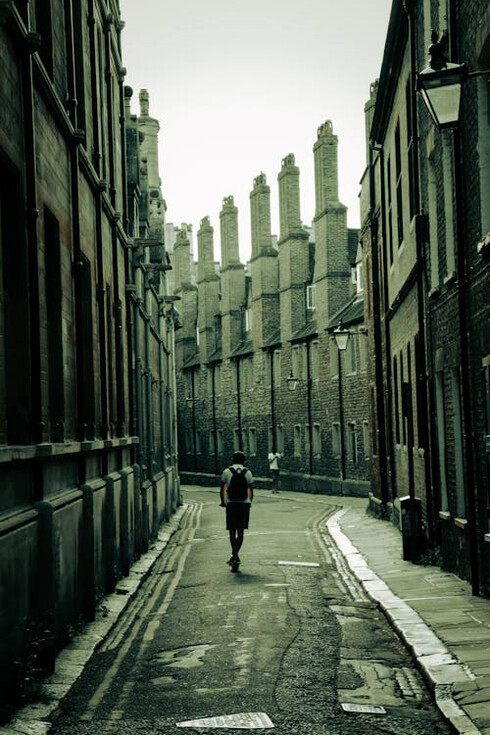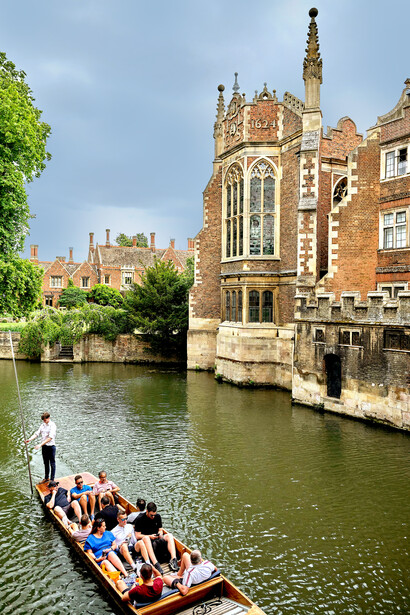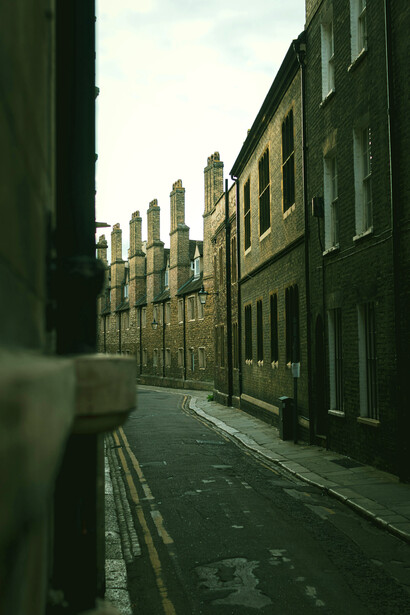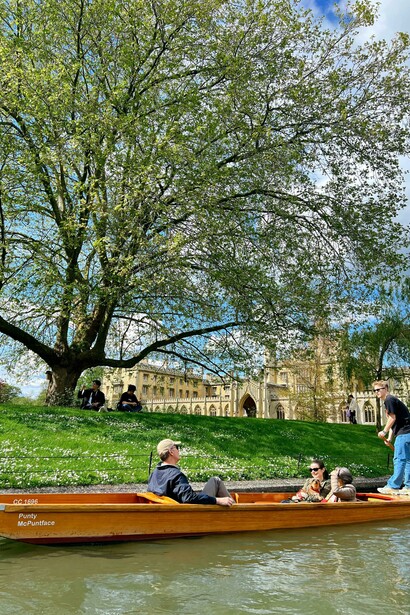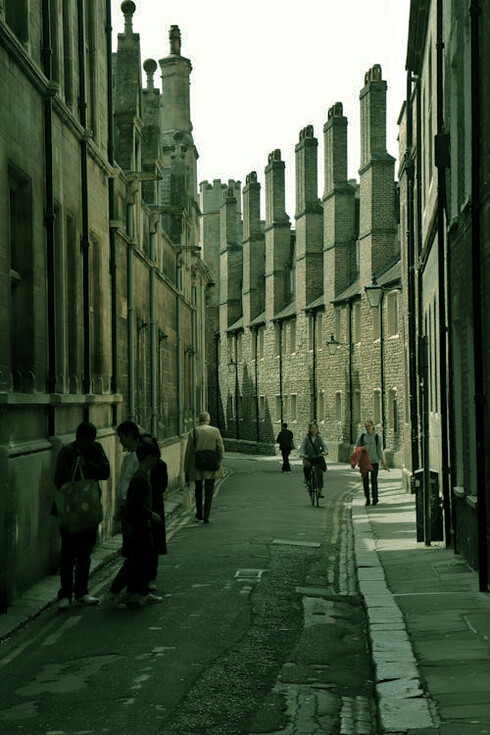There are few places in England where time moves as gently as the River Cam. This summer, I found myself swept into the dreamy pace of Cambridge—a city where every stone whispers knowledge, and every turn leads to the echo of centuries-old footsteps. Known globally for its ancient university, Cambridge reveals itself not only in its Gothic chapels and scholarly traditions but also in its verdant riverbanks, bustling market squares, and quiet lanes where history and beauty intertwine.
Drifting through time: punting on the River Cam
My Cambridge day began on the water. A classic punting tour on the River Cam offered the perfect introduction to the city’s tranquil rhythm. As our flat-bottomed boat glided beneath low-hanging willow trees, a soft breeze carried the distant chime of chapel bells. Our guide, a university student with a dry wit and deep knowledge of Cambridge lore, pointed out landmarks and shared anecdotes—some historical, others humorously apocryphal.
We passed under some of the university’s most iconic bridges. The Bridge of Sighs, a covered neo-Gothic archway built in 1831, mirrored beautifully in the still water, while the Mathematical Bridge, often mistakenly believed to be held together without nails, stood as a quiet tribute to Cambridge’s legacy in engineering and the sciences. Each bridge we floated under felt like a portal to another century. Gliding along, it was easy to understand why poets, philosophers, and physicists alike have found inspiration here. There was something both grounding and uplifting in that slow movement—almost like reading a sonnet one line at a time.
Trinity College & Newton’s legacy
From the riverbanks, I stepped onto the cobbled paths of Trinity College, one of the university’s largest and most distinguished colleges. Founded by Henry VIII in 1546, it has produced more Nobel Prize winners than many countries. Its grand courtyard was bathed in golden light, but what drew my attention was a modest apple tree, said to be a descendant of the one under which Sir Isaac Newton formulated the theory of gravity.
Standing in its shade, I couldn’t help but reflect on how many world-changing ideas had been born in this very environment of quiet contemplation. It wasn’t hard to imagine a young Newton strolling these same paths, questioning the forces of the universe with each step. There’s a palpable sense of legacy here—not just of prestige, but of curiosity, of minds forever pushing the boundaries of understanding.
Strolling along Trinity Lane and visiting King’s College
I continued through Trinity Lane, a narrow historic passage where the air felt thick with centuries of scholarship. The old stone walls seemed to listen silently as visitors passed, preserving countless secrets of the past. This atmospheric lane led me to the grand King’s College, whose majestic presence commands awe from any angle.
Inside King’s College Chapel, commissioned by Henry VI in the 15th century, I was awestruck. The fan-vaulted ceilings—the largest in the world—soared above like wings of stone. The stained glass windows, intricate and glowing in the afternoon sun, told biblical stories and historical scenes in vibrant color. A choir practicing in the distance lent a spiritual echo to the space, a reminder that this wasn’t just an architectural masterpiece but a living place of worship and music. It was one of those rare places where beauty and silence meet, and the soul feels full.
Browsing the Cambridge Market Square
To absorb the local energy, I headed next to the Cambridge Market Square, alive with color, chatter, and the scent of street food. The contrast from the solemn college chapels was refreshing. Students sipped coffee between classes, tourists hunted for souvenirs, and elderly locals exchanged greetings like old friends. I wandered from stall to stall, drawn in by everything from fresh strawberries to quirky hand-knitted socks.
Among the many treasures, I found a delicate watercolor sketch of the River Cam—a soft, misty rendition of the very scene I had enjoyed that morning. I bought it without hesitation. It now sits on my desk, a quiet reminder of a summer afternoon when time slowed just enough to let beauty seep in.
The mesmerizing Corpus Clock
Not far from the market stands one of Cambridge’s most modern yet enigmatic landmarks: the Corpus Clock, installed in 2008 on the wall of the Taylor Library at Corpus Christi College. This is no ordinary timepiece. Instead of hands or numbers, it features a giant golden disc over which an eerie, insect-like creature—the Chronophage, or “time-eater”—crawls relentlessly, devouring each second with its mechanical jaws.
The clock’s hypnotic ticking and jerky movements symbolize time’s unpredictability. It sometimes speeds up, slows down, or stops altogether—only to resume again, mocking our expectations. As I stood watching, I couldn’t help but reflect on the way time moved in Cambridge: not in minutes and hours, but in moments of wonder, learning, and reflection.
A moment of culture at the Fitzwilliam Museum
Before leaving, I made a final stop at the Fitzwilliam Museum, often called the "mini British Museum" for its impressive collections. Inside its grand neoclassical façade, I found a serene world of artistic treasures. Ancient Egyptian sarcophagi, elegant Roman busts, and paintings by Monet, Degas, and Turner filled the galleries.
One particularly moving moment came in front of a delicate Degas ballet painting, where light and motion danced across the canvas with the same grace I had felt throughout the day. The museum didn’t just house objects—it felt like it stored the very spirit of human creativity and pursuit of beauty.
A city that teaches you to breathe
By evening, as the bells chimed across the college spires and the golden light faded behind the rooftops, I realized that Cambridge is more than just a city of scholars. It is a living dialogue between past and present—a place where time flows like the Cam itself: calmly, reflectively, and always forward. In this city of ideas, you don’t just learn—you begin to understand how to listen, how to wonder, and perhaps most importantly, how to be still.
